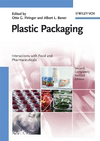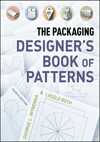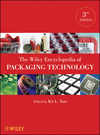With innovations in the flexographic printing industry becoming more prevalent than ever, recent enhancements in press technology have driven the need for new plate and sleeve advancements to keep pace with the high-precision machinery and increasingly advanced artwork patterns. As the intricacies of artwork become more complex, printed line screen counts are getting higher and area coverage is getting lower and lower – measurements of some dots are even in half percentages. These complexities are exacerbated by the increasing demand for shorter print runs that ultimately reduce working capital for the customer while requiring more efficient management of short-term promotions.
Recognizing market trends, many flexographic printers are making substantial investments in new technologies to remain competitive and satisfy shifting customer demands. Some printers, however, are dismayed to find that even with the new technology and processes, there is little improvement in the quality of their printed materials. While new equipment does play a large part in the quality of the finished product, other contributing factors can make the difference between good results and great results.
High print quality at high press speeds can be directly associated with the quality of the foam used in the plate mounting tapes. However, if the wrong plate mounting tape is used, the print quality can suffer greatly – regardless of the quality of the hardware. New plate technology is currently available for printing fine screens of 5 percent, 3 percent, 1 percent, or even dot with high line-screen plates of 200 lines per inch or higher. Rendering these results in a daily production environment at enhanced production speeds requires a very specialized type of soft plate mounting tape that can act as a shock absorber.
Additionally, this soft tape must be able to compress and return to the same thickness from the first impression to the last impression regardless of whether the print job is a few thousand feet or a few million feet in length. This compression and recovery of the foam, and the consistency of the cushioning effect, are the most important factors in maximizing your investments in state-of-the-art presses and plate technologies. Choose a plate mounting tape that provides the unique qualities of the best shock absorption to achieve those very fine highlights and one that can perform over prolonged print runs. Using anything less than the highest quality plate mounting tapes will lessen the quality of your technological investments in presses, inks, anilox or plates.
Without a doubt, the adhesive properties of the plate mounting tape are as equally important as the foam quality. The efficiency and process repeatability of mounting and demounting flexographic printing plates can make the difference between being profitable by prolonging the useful life of plates, or ruining plates and having to buy new ones. The right adhesive lets you remove the tape cleanly with little to no required cleaning instead of having to clean adhesive and foam residue off every sleeve or cylinder when the job is stripped. On a daily basis, most flexographic printers contend with printing plate edge lifting because of the use of thicker plates on narrow diameter cylinders, or damaged printing plates because the adhesion to the plate is so high they either stretch or tear during demounting.
To overcome edge lifting, printers have used primers, magic markers, edge sealers and tapes.
To achieve repeatability and efficiency, the printer must choose a proper plate mounting tape specifically engineered with today’s printing technologies and processes in mind. When selecting a plate mounting tape, be sure to select one that has a plate-side adhesive that is made for the plate material and thickness being used. Also, be sure to choose an adhesive that is designed to bond to the cylinder or sleeves material being used. Using the wrong open-side adhesive can result in either bubbling or labor-intensive clean up.
In trying to ensure the proper use of plate mounting tapes, the most important factor is good communication with your plate mounting tape manufacturer. Many plate mounting tape suppliers offer a wide variety of foam tapes with varying hardness levels and adhesive combinations. Conducting trials is always a wise choice when testing a variety of tapes with various press material combinations. In the end, doing your homework by choosing the right tapes for your pressroom dynamics will help to maximize both your investments and your customer’s experience.
Tesa Tape
(800) 426-2181
www.tesatape.com









